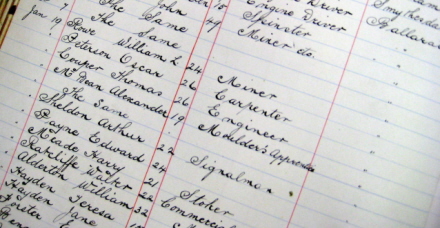PAYNE, Edward John William (1853-1938)
Gold, Diamond and Manganese Discoverer and Prospector
Ballarat School of Mines (SMB) 1890-1894
Edward Payne discovered gold at Southern Cross, Western Australia. He was born on 04 August 1859 at Livingstone Creek,Omeo to English born parents John Paynter and Ann Dewey Cook.
Malcolm Uren in 'Glint of Gold' lists Edward Payne as one of the 1887 prospectors to the Western Australian locality of Toodyay to Eenuin. He reports that 'excitement followed excitement when, in 1887, R. Greaves. E. Payne, H. Anstey, T. Risely, B.Colreavy and W.J. Parker struck gold in several parts of the Yilgurn goldfield. Golden Valley and Southern Cross were two of the romantic names associated with this field'. Uren further explains that Victorian miners Edward Payne and Richard Greaves were friends, and at Payne's suggestion they set out on a prospecting trip. They started on the major prospecting trip from Perth on 05 July 1887. Rock was tested for gold along the way. When they reached the Yilgarn Range quartz outcrops were examined. The first gold was discovered by Payne in a quartz floater. Greaves struck a pick into a larger piece of quartz and had difficulty getting it out. When he did so he discovered it was nearly half gold. Uren reports 'on sinking at this point the reef was uncovered. This marked the discovery of a payable gold reef on what afterwards was the Eastern Goldfields of Western Australia. A short time later Payne and Greaves discovered what became known as the Golden Valley Field. It is interesting that Payne undertook his studies at SMB after making his gold discoveries.
Described as a man of many inches over 6 feet tall, he built up, and lost, whole fortunes. During World War One Payne lowered his age to secure an appointment for war service in West Africa, his mission being to explore for manganese ore required for the manufacture of guns. His search was rewarded by the discovery of 30,000,000 tons of manganese, at that time the largest known deposit of this metal in the Gold Coast region. Payne helped build a railway for transporting the ore to the coast.
Edward Payne died at Birmingham, England on 09 December 1932, aged 73. His obituary in the Birmingham Post was headed 'Discovered Goldfields and Manganese Ore'. It states that Payne discovered the Yilgarn goldfields in 1887, and a year later discovered gold at Wonyan and in the Coolgardie Belt. After two years of exploration in Western Australia Payne went to South Africa where he remained until 1908. Payne's next destination was London, then he set up a private business in South America, returning to England in 1913.
We are seeking further information on Edward Payne. If you are able to assist please contact the curator c.gervasoni@federation.edu.au
This biography prepared by Clare Gervasoni, October 2007, updated January 2008, and revised in March 2022 with thanks to Carmel Galven, and acknowledging the research of Michael Tedd.
Image caption (RHS): Edward Payne listed in the SMB Entrance Book (Cat.No.509)
